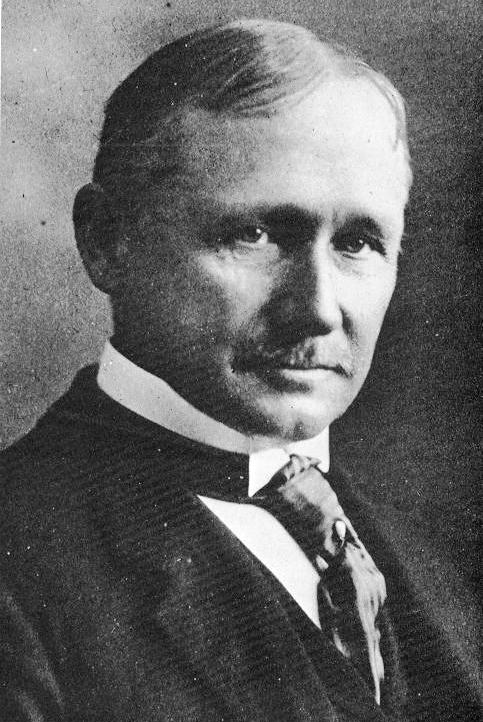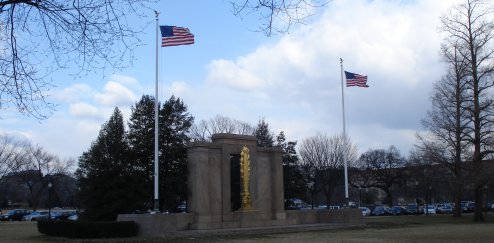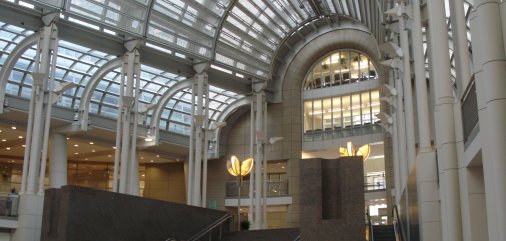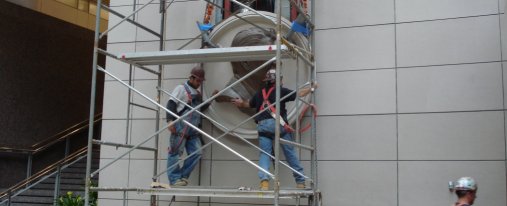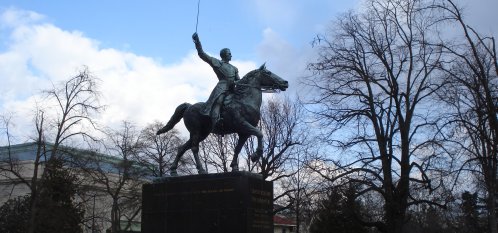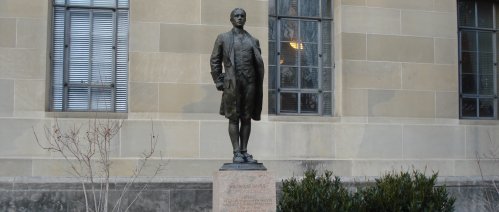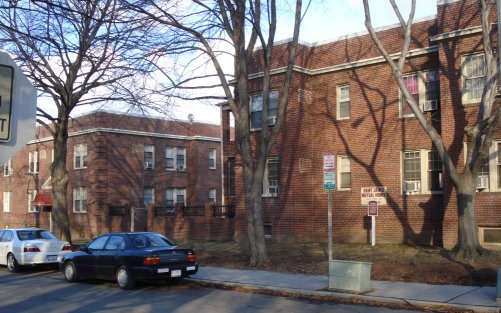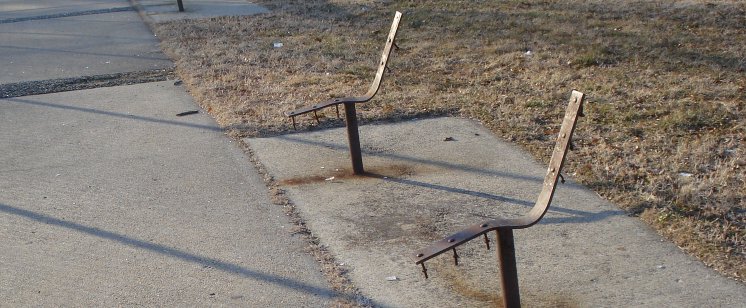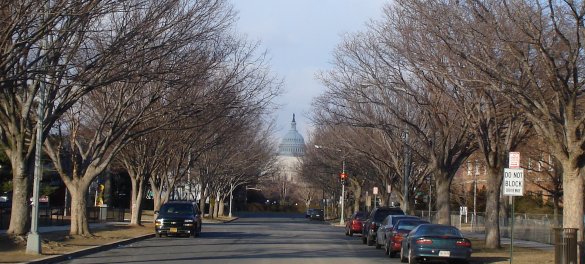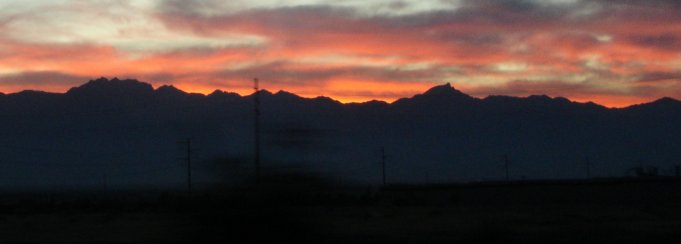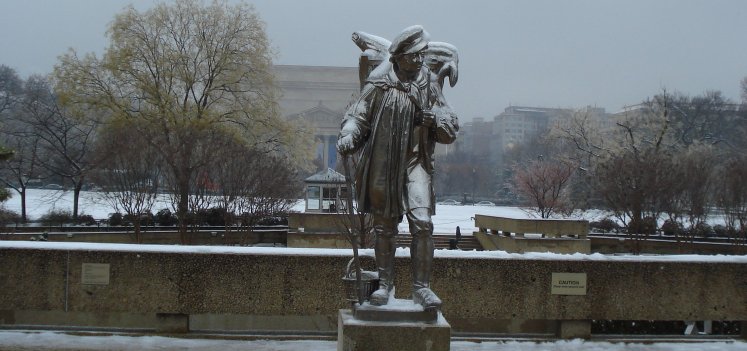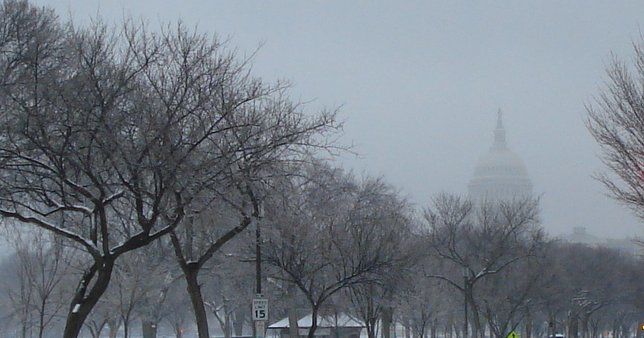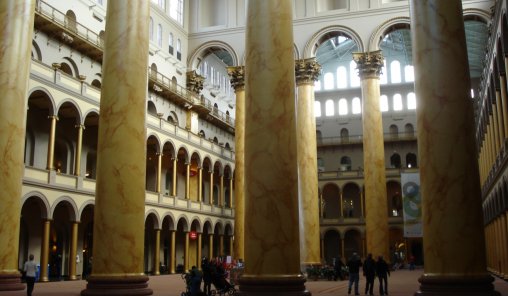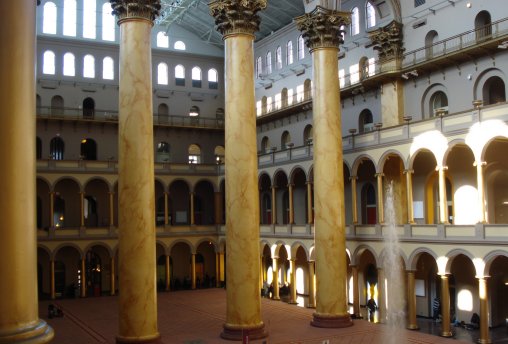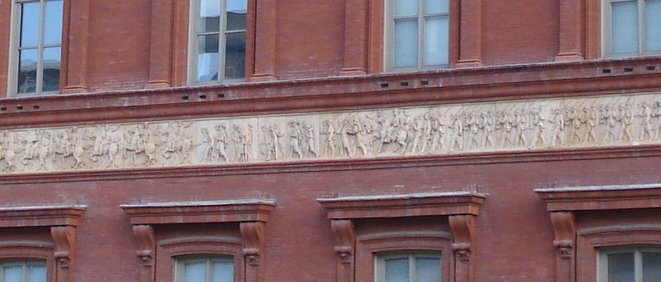I suppose the economy will continue to decline for some time, with or w/o the stimulus package. But I prefer to look to the things that are looking up.
Below are the new homes near my house. Now sold out.

While we were at Sears yesterday to get a new dishwasher, making our small contribution to the recovery, we noticed the help wanted signs. There was also a help wanted sign at Safeway. Construction around Washington has slowed but not stopped. The new complex near my house, the one that had sold no lots last summer, is now sold out and the houses are almost done. I don’t like the houses, but the evidently are what some people want, people with the means to buy new houses.

Recessions aren’t all bad. I read in the papers that people are saving more money, putting off purchases and being more careful about what they buy.
Same place in July 2008 (six months ago)

This is the paradox of thrift. Saving is a virtue, but if enough people save enough money during hard times, not enough money flows through the economy.
Below is condo construction near my house.

Still, until recently we worried that people were not saving enough, that houses were getting too expensive and that people were becoming to extravagant in their purchases. It is not what you make but what you keep. Real disposable income rose every month of the last quarter and the savings rate spiked up too. Read about it at this link.
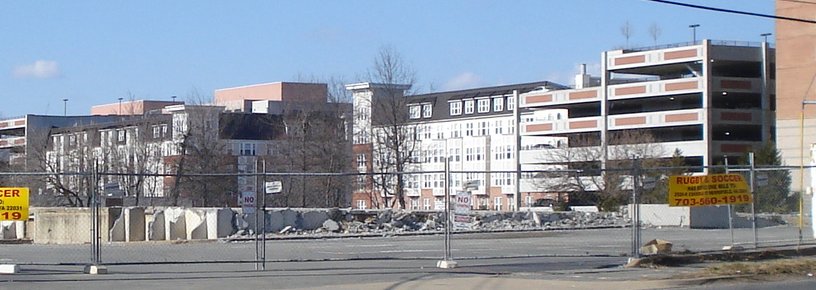
I don’t want to minimize the problem. I know people are suffering and I stipulate that I have a steady job so maybe I don’t feel the downturn as much as some others. But I have lost money in the markets and my house is worth significantly less. I would also point out that even with the recent jump in unemployment; almost 93% of Americans still have jobs too. So my experience is not that special. I think we are getting a little too worked up. FDR famously said that we have nothing to fear but fear itself. Maybe we should recall his wise words, uttered in a much more difficult time. I think some of this passion we hear on the news is hyperbole. As Ben Franklin said, “passion governs and she never governs wisely.”
I have been reading a lot about the Great Depression and I got a second-hand feeling for those hard times from my parents. During those years, unemployment reached almost 25% and that number understates the problem in comparison to today, since there were many more farmers back then as a % of the population and many of them suffered hard times or even lost their farms but were not immediately counted as unemployed. Beyond that, back in the 1930s many more families had only one wage earner.
Below – we still have vultures.

So let’s lay this out by the worst rates per decade. According to Bureau of Labor Statistics, unemployment rate in 1933 = 24.9%; unemployment rate in 1949 = 7.9; unemployment in 1958 = 7.5; unemployment in 1961 = 7.1%; unemployment rate in 1975 = 9.0; unemployment rate in 1982 = 10.9%; unemployment in 1992 = 7.8%; unemployment in 2009 is 7.6%. You might also take a look at the better times – 1948 3.4%; 1953 = 2.5%; 1969 =3.4%; 1970 3.9%; 1989 = 5.0%; 1999 = 4.2%; and not long ago in 2006 = 4.4%. (I graduated HS in 1973. From 1973-1997, the unemployment rate never dropped below 5% and in many years it was above today’s level of 7.6%, BTW.)
We have hard times periodically and we recover. During the hard times, we think good times will never return; during good times we think we have reached a new age when hard times will come again no more. We are always wrong. Things decline after they reach a peak and the come up after they hit a bottom. That is the way is was, is and always will be. It is a simple tautology.
Now is the winter of our discontent about to turn to glorious summer?








